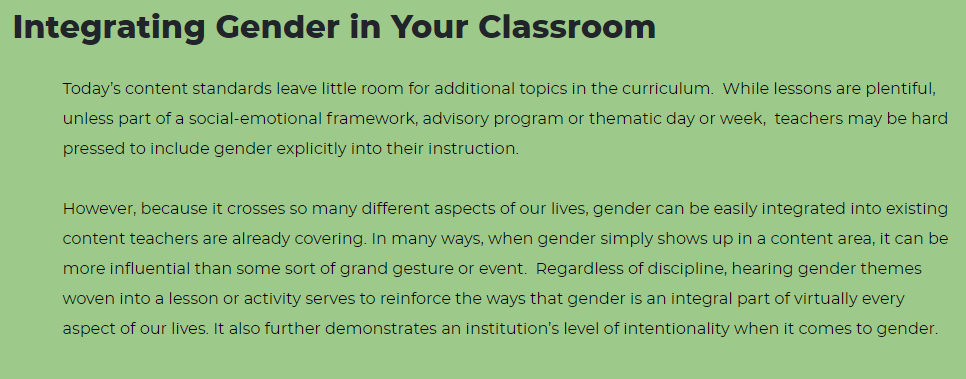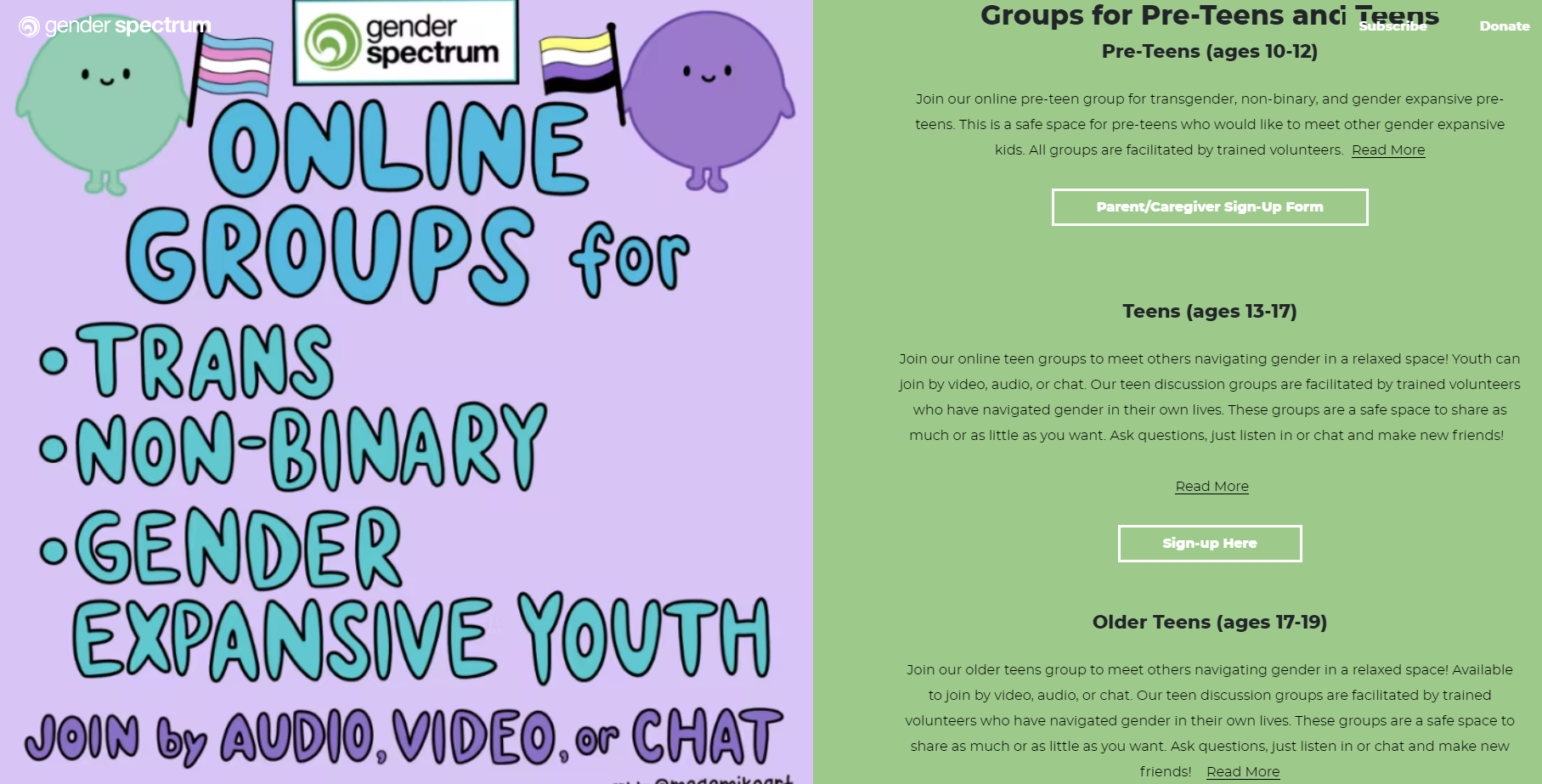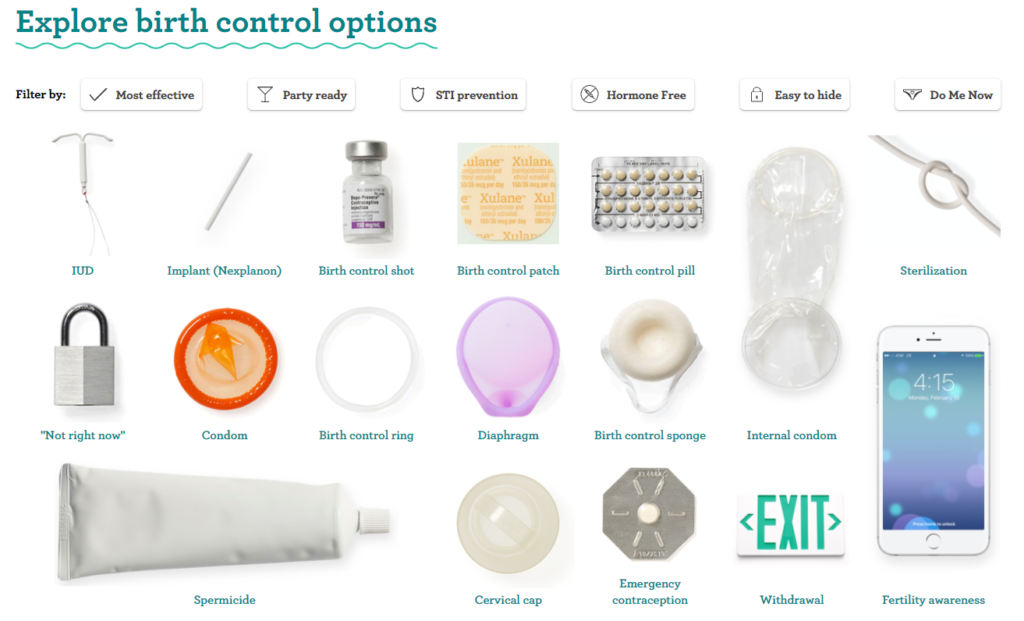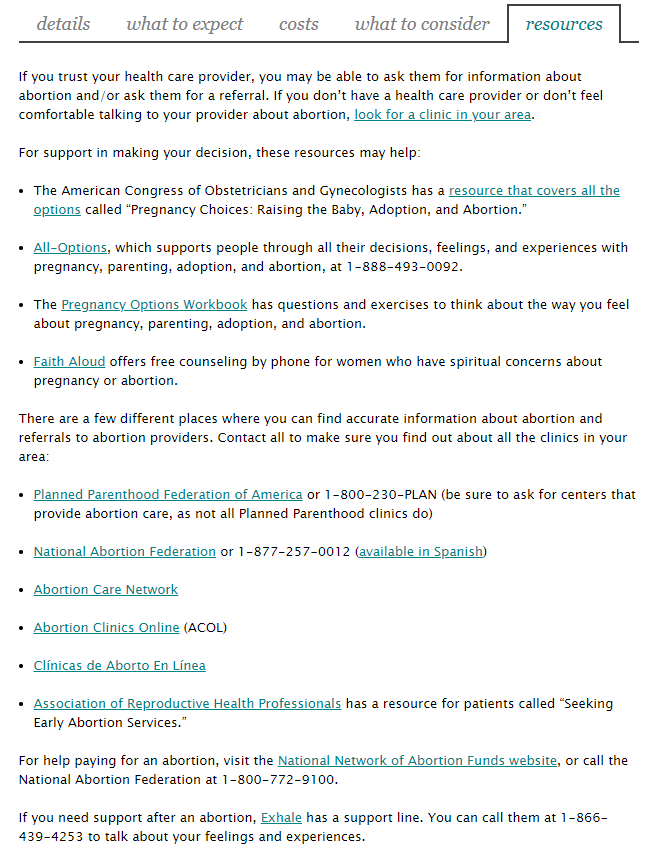
Stanley Middle School provides educators with resources to teach children about gender ideology; tells students they can receive birth control and abortions without parental consent
Incidents
- Issues
- Sex and Gender
Stanley Middle School offers “Sexual Health Education” resources for teachers on its website targeting seventh and eighth graders. A few resources that the school offers for eighth graders include “Understanding Gender,” “Sexual Orientation, Behavior and Identity,” and “Blue is for Boys, Pink is for Girls … Or are they?” The “Understanding Gender” resource links to the website of the organization Gender Spectrum. The organization states that there are more than two genders and that sex and gender are not the same:
People tend to use the terms “sex” and “gender” interchangeably. But, while connected, the two terms are not equivalent. Generally, we assign a newborn’s sex as either male or female (some US states and other countries offer a third option) based on the baby’s genitals. Once a sex is assigned, we presume the child’s gender. For some people, this is cause for little, if any, concern or further thought because their gender aligns with gender-related ideas and assumptions associated with their sex. Nevertheless, while gender may begin with the assignment of our sex, it doesn’t end there. A person’s gender is the complex interrelationship between three dimensions: body, identity, and social gender.
The Gender Spectrum website offers resources specifically targeting “youth” and even teachers. Gender Spectrum offers resources to educators on a page titled “Integrating Gender Diversity Into Everyday Curriculum.” This page explains that the discussion of gender can be integrated into subjects like history, science, mathematics, and even physical education. In targeting the youth, Gender Spectrum offers online chatrooms for children as young as 10 years old who identify as “trans” or “non-binary.”


In Stanley Middle School’s “Sexual Orientation, Behavior and Identity” document, teachers are given a lesson plan to teach children about sexual orientation and identity. Learning objectives include students being able to “name at least three different sexual orientations” and being able to “describe the three components of sexual orientation (orientation, behavior and identity).” The lesson plan includes telling children that they can’t change their orientation or how they feel about people: “You can change your BEHAVIORS, you can change your IDENTITY—but you can’t change your ORIENTATION or how you feel. Feelings of attraction are discovered, not chosen.”
Several of the school’s resources for “Sexual Health Lessons” also include a warning about the language used in the lesson plans:
Language is really important and we’ve intentionally been very careful about our language throughout this curriculum. You may notice language throughout the curriculum that seems less familiar using the pronoun “they” instead of “her” or “him,” using gender neutral names in scenarios and role-plays and referring to “someone with a vulva” vs. a girl or woman. This is intended to make the curriculum inclusive of all genders and gender identities.
In the resource “Blue Is for Boys, Pink Is for Girls … or Are They?” educators are given a lesson plan to help students distance themselves from societal gender norms. One of the lessons includes asking how boys will be viewed if they are interested in activities more associated with girls. The lesson plan also provides an example of what teachers can say to introduce the topic of transgenderism into the classroom:
We’ve been talking during class about messages people get on how they should act as boys and girls—but as many of you know, there are also people who don’t identify as boys or girls, but rather as transgender or gender queer. This means that even if they were called a boy or a girl at birth and may have body parts that are typically associated with being a boy or a girl, on the inside, they feel differently.
Think, for a moment, about the experience of hearing these gendered messages and feeling like you were a different gender? If you felt on the inside like you were a girl, but everyone perceived you as a boy and pushed you to be really masculine; or you felt on the inside that you were a boy and people pushed you to be more feminine. Or if you felt like you were both boy and girl, or somewhere in between boy and girl. What do you think that would be like?
The school’s resources for teaching eighth graders include additional documents on the topics of birth control and abortion. One document titled “Menstruation & Pregnancy” lets students know that they do not need consent from their parents to receive birth control or to have an abortion. The document states: “Under California law, minors can access abortion services confidentially, meaning
without their parent or guardian’s permission. In California, abortion is legal up to 24 weeks into
the pregnancy for any reason.” Another document shows what minors can access without parental consent.
The resources for educators include a document called “Birth Control Basics” that shows how to teach the seven “Birth Control Methods.” These are “abstinence,” “external condoms,” “pills/patch/ring,” “IUDs/shot/implant,” “withdrawal,” “emergency contraception,” and “dual use.” Another resource included for educators is a link to the website Bedsider. The linked page includes birth control options for people to consider. The website also has a page that provides resources for women considering an abortion and another page about “dating and hookups.”



The resources for educators teaching eighth grade classes have a “Healthy Relationships” presentation that states “gender is a spectrum” and that “making fun of a person’s sexual orientation, gender identity or the way that they express their gender” is a form of “sexual harassment.” Another presentation is called “Exploring Gender Diversity” that also explains gender is on a spectrum. The presentation further explains that the “Gender Experience” consists of “three dimensions” and “each dimension is on a spectrum.” The three dimensions are listed as “Gender Biology/Body,” “Gender Expression,” and “Gender Identity.”
The “Exploring Gender Diversity” presentation also links to a resource that tells children: “Everyone has a gender identity—a feeling or sense of being male, female or somewhere in between. Sometimes people’s gender identity matches their bodies, and sometimes it does not.” A video is included in the resource titled “Range of Gender Identities” that explains people can be male, female, both, or neither. The video also advises to not make assumptions about someone’s gender.

Stanley Middle School also offers resources for educators to teach seventh graders about “Sexual Health Education.” One resource for seventh graders is a lesson plan called “Sexual and Reproductive Anatomy.” This plan provides teachers with an example of what to say before delving into the lesson:
Most people have either biological male reproductive parts or biological female reproductive parts and that most people who have biological male reproductive parts are boys and most people who have biological female reproductive parts are girls, but sometimes people can have reproductive parts that don’t match who they are.
Another lesson plan that the school designates for seventh graders is called “Puberty and Reproduction.” This document has a link in it going to a Canadian website that claims gender is a “social construct.” The website also supports abortion as a potential option for a woman with an “unplanned pregnancy.”


Stay Informed
